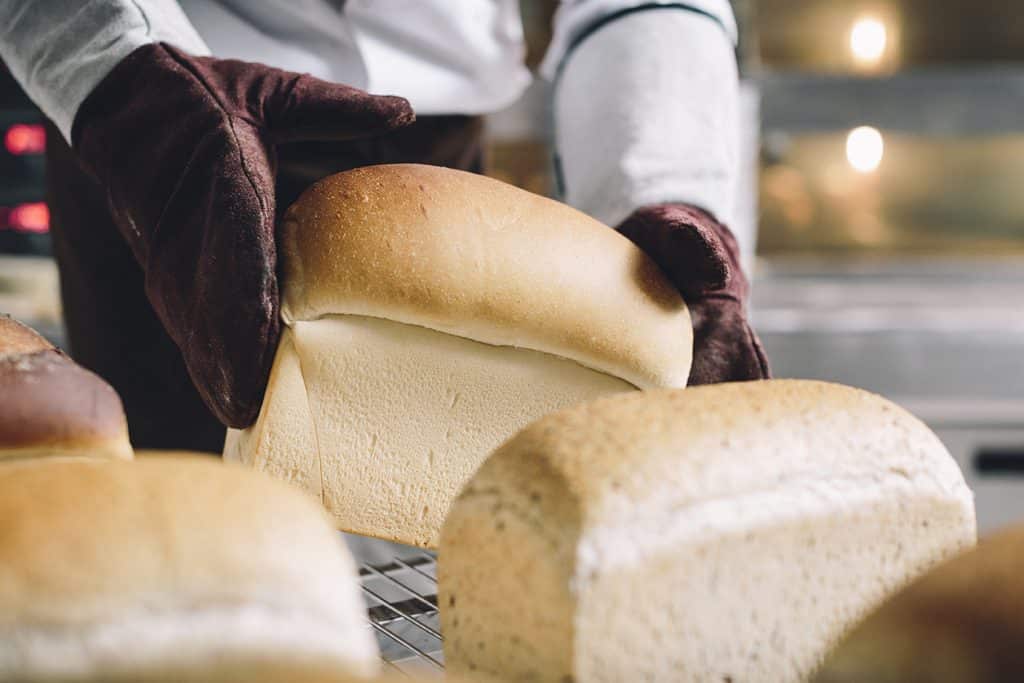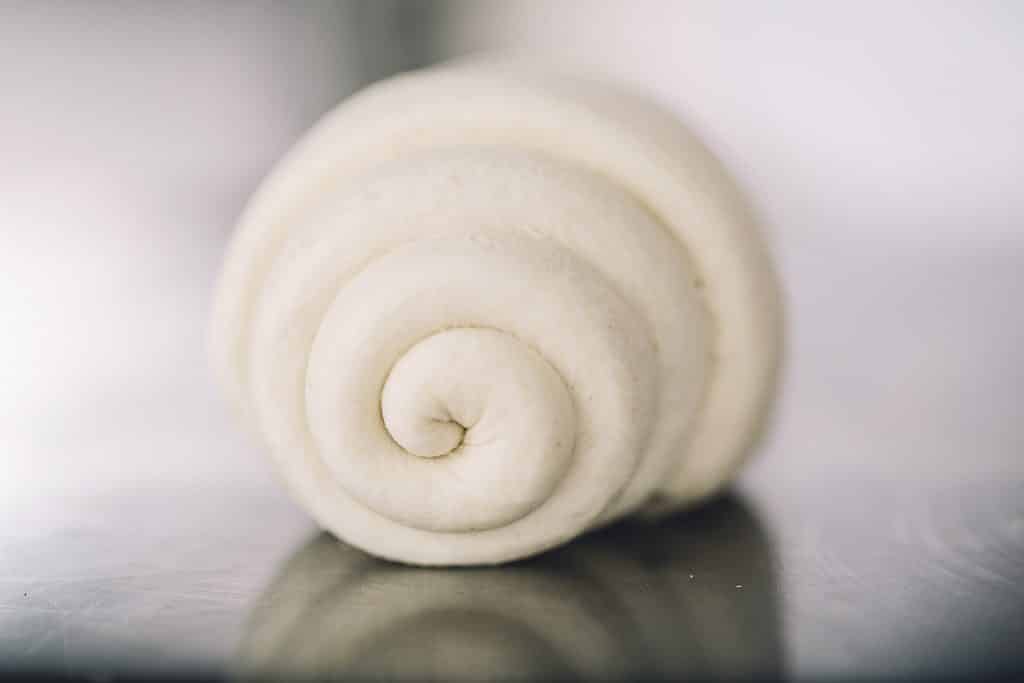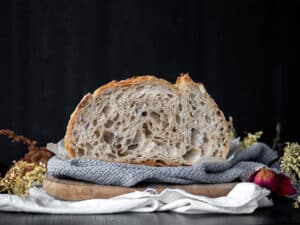Volume is an appearance factor that is decisive for the consumer, in that it is assessed on first glance. A smooth fermentation process and the formation of the gluten network are pre-requisites for obtaining adequate volume and rely on a great many technical parameters involving both the choice of ingredients and process. This article takes a look at the functional ingredients that impact upon volume in bread dough.
Flour quality
Flour, the major component of dough, plays a decisive role in achieving adequate loaf volume. Several parameters are key to the composition of flour and are determined by agronomical factors (wheat variety, climate conditions during cultivation and harvest, wheat storage conditions) and milling conditions (varietal blends, milling procedure, maturation time prior to use in breadmaking, etc.).
- Gliadins and glutenins, the insoluble proteins found in wheat flour. The total amount of gliadins and glutenins, comprising the gluten network, not to mention their ratio, determine the dough’s visco-elastic properties. A balanced elasticity/extensibility ratio is required (provided by the glutenins and gliadins respectively) for achieving satisfactory volume.
- Damaged starch, with a rate of between 5 % and 10% will provide yeast with a satisfactory substrate for their fermentative activity.
- Arabinoxylans are sugars, which are not assimilable by the yeast, but which are able to harness up to ten times their weight in water. The water thus retained is not, therefore, available for the gluten network to form from proteins. This compromises the dough’s rheological properties and the achievement of volume (Autio, 2006).
- Polar lipids (0.6 to 1 % of flour), which include phospho-lipids and glycolipids, have an impact on dough viscosity and plasticity.
Water
The amount of water added to the liquid ingredients is key to obtaining a satisfactory dough consistency. Too much water will give a “weak” dough, in other words lacking strength, thereby making it difficult to work, promoting collapse and thus adversely affecting the final volume of the loaf. Conversely, too firm a dough obtained through lack of hydration will compromise its development by reducing its extensibility.
Yeast
Yeast in doses that are too high will accelerate fermentation and thus result in a decrease in dough tolerance, which is likely to undermine the achievement of volume.
Salt
Salt has opposing effects on the different technological parameters involved in obtaining loaf volume: it slows the kinetics of yeast fermentation, thereby resulting in a decrease in CO2 production and a longer proofing time. However, it strengthens the gluten network and therefore its gas retention properties.
Mixing
During mixing, the insufficient unravelling of protein skeins can compromise the formation of the gluten network that will help retain the CO2 necessary for the ultimate loaf volume.
Furthermore, the dough should be maintained at a temperature of around 18-20°C to optimise the achievement of volume. This temperature depends both on the temperature of the ingredients implemented and the temperature of the environment.
Shaping
Risk of tearing on the surface of the dough mass during shaping brings about a lack of permeability, which can result in loss of loaf volume. A resting phase prior to shaping may therefore be recommended in such cases.

Final proofing
This stage, which follows that of mixing, is the most decisive stage in the breadmaking process for the final volume of the product. If the length of this stage is not carefully controlled, it can lead to two types of problem: if baked before proper proofing, the dough mass can burst open leading to misshapen loaves. If proofing is too long, the dough mass will not rise and the loaf will be flat.
Furthermore, it is important to maintain good ambient humidity to prevent “crusting”, a phenomenon that can undermine the loaf’s volume and give rise to cracking on the surface of the dough mass.
N.B.: Good dough tolerance offers a certain flexibility as to the final proofing time.
Scoring (the case of crusty loaves)
Scoring has a fundamental impact upon the loaf’s volume and structure. Also referred to as “scarification”, it consists in slashing the dough pieces just before they go into the oven. It plays two key roles:
- aesthetic, in the way that the scores are formed,
- structural, since they create “vents” through which the gases can escape during the first few minutes of baking and are therefore directly involved in the dough’s development in the oven.
The way in which the gases can escape from the dough in the oven will also dictate the final air-hole texture of the loaf.
N.B.: this operation is performed when the dough mass is at its most fragile, and destroys its permeability: proper tolerance is therefore essential in order to avoid the collapse of the dough pieces or their failure to acquire oven spring.
Baking
Baking is mostly responsible for a loaf’s volume, notably through the expansion of gases under the effect of temperature.
Heat: an insufficient amount of heat is likely to compromise the proofing of the dough mass during baking:
- excessive heat can result in a dense crumb,
- lack of heat can result in flat loaves.
Steam: this is used in the case of bulk batch bakes to prevent tearing as a result of overly rapid crust formation. If it is not properly controlled, steam can also bring about defects in volume:
- a lack of steam (sometimes linked to heavily limescaled equipment) can lead to under-risen loaves with tearing,
- excessive steam can result in flattened loaves with no scoring visible (INBP, 2016).
Maximising dough tolerance with the aid of functional ingredients

Tolerance is a decisive factor in the development of bread dough and therefore the volume of the finished product. It depends on several elements inherent in the recipe or process. The use of accurately dosed functional ingredients serves to maximise dough tolerance and ensure the appropriate volume and appearance of the finished product. They belong to different categories (ingredients, additives, processing aids) and must comply with regulatory requirements, as well as the wishes of consumers and bakers.
Oxidants for stabilising dough
The main merit of oxidants in the baking industry lies in their ability to strengthen the gluten network by creating disulfide bridges, i.e. highly solid covalent bonds, between protein chains. Said oxidative action results in more resilience in terms of dough tenacity, which serves to prevent the dough from collapsing throughout the manufacturing process, from the mixing through to the baking stage.
Enzymes to ensure proper fermentation
- The problem:
The availability of simple fermentable sugars formed on the hydrolysis of the starch present in flour depends on the complementary action of the beta-amylases and alpha-amylases. Nevertheless, alpha-amylases are generally present in very low levels in flour, save during grain germination (conditions of humidity or prolonged spells of rain, etc.).
- The solution:
In order to ensure the satisfactory availability of sugars and supplement the action of the beta-amylases, alpha-amylases of vegetal, fungal or bacterial origin can therefore be added to the dough during mixing.
Another type of enzyme may be used in conjunction with the amylases. Pullulanases are capable of hydrolysis, a process during which they release maltodextrins and increase the potential action of the beta-amylases.
- Result:
Fermentation is made easier; the dough is softened in the process in a way that will improve its development in the oven. Overdosing can lead to a sticky dough, or even crumb (Syfab, 2015).
Other enzymes to improve tolerance
- Mode of action:
Owing to their high water retention capacities, xylans, especially arabinoxylans, can limit the availability of water present in dough. Xylanases, processing aids of bacterial or fungal origin, are enzymes with the ability to reduce the amount of water retained by these carbohydrates and thus increase its availability for the other components of dough.
- Result:
Adding them has the initial effect of assisting the development of the gluten network. The machinability of the dough is thus improved, rendering it more able to withstand the subsequent dividing, rounding, shaping and even sheeting operations (Pyler and Gorton, 2008).
Emulsifiers to promote gas retention
- What are they and how do they work?
Emulsifiers are amphiphilic molecules, in other words they possess a hydrophilic pole and a hydrophobic pole (like the polar lipids in flour). Lecithins were the first emulsifiers ever used and were gradually replaced by more active emulsifiers.
- Mode of action:
When added to dough, they enable the formation of finer strands of gluten, with fewer starch grains incorporated into the gluten network, thus leading to improved gas retention and therefore volume in the end product.
- Result:
The addition of emulsifiers helps to improve dough elasticity and extensibility, while conferring a more finely textured crumb. Some emulsifiers also have worthwhile benefits in terms of softness and anti-blistering properties.




